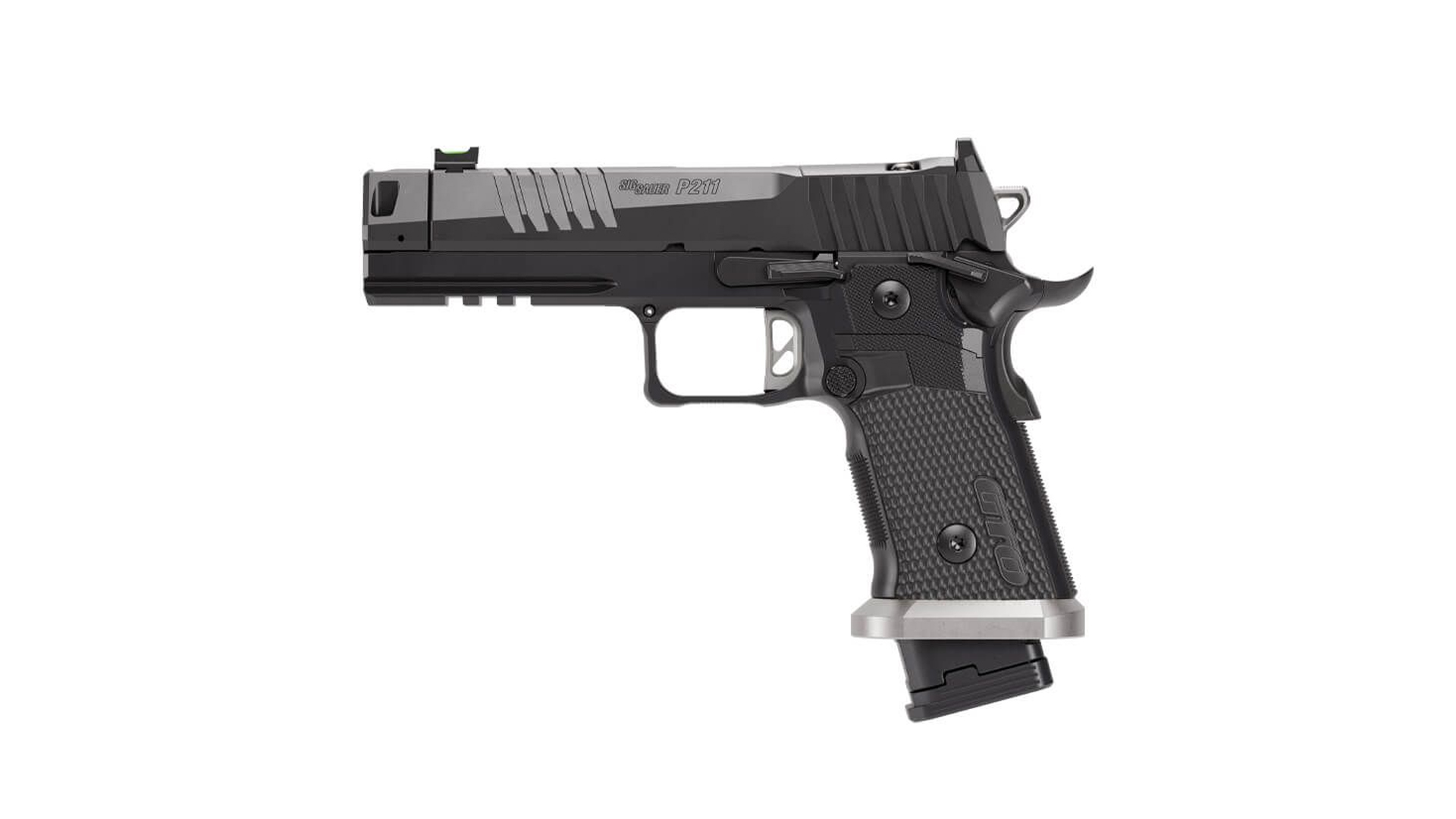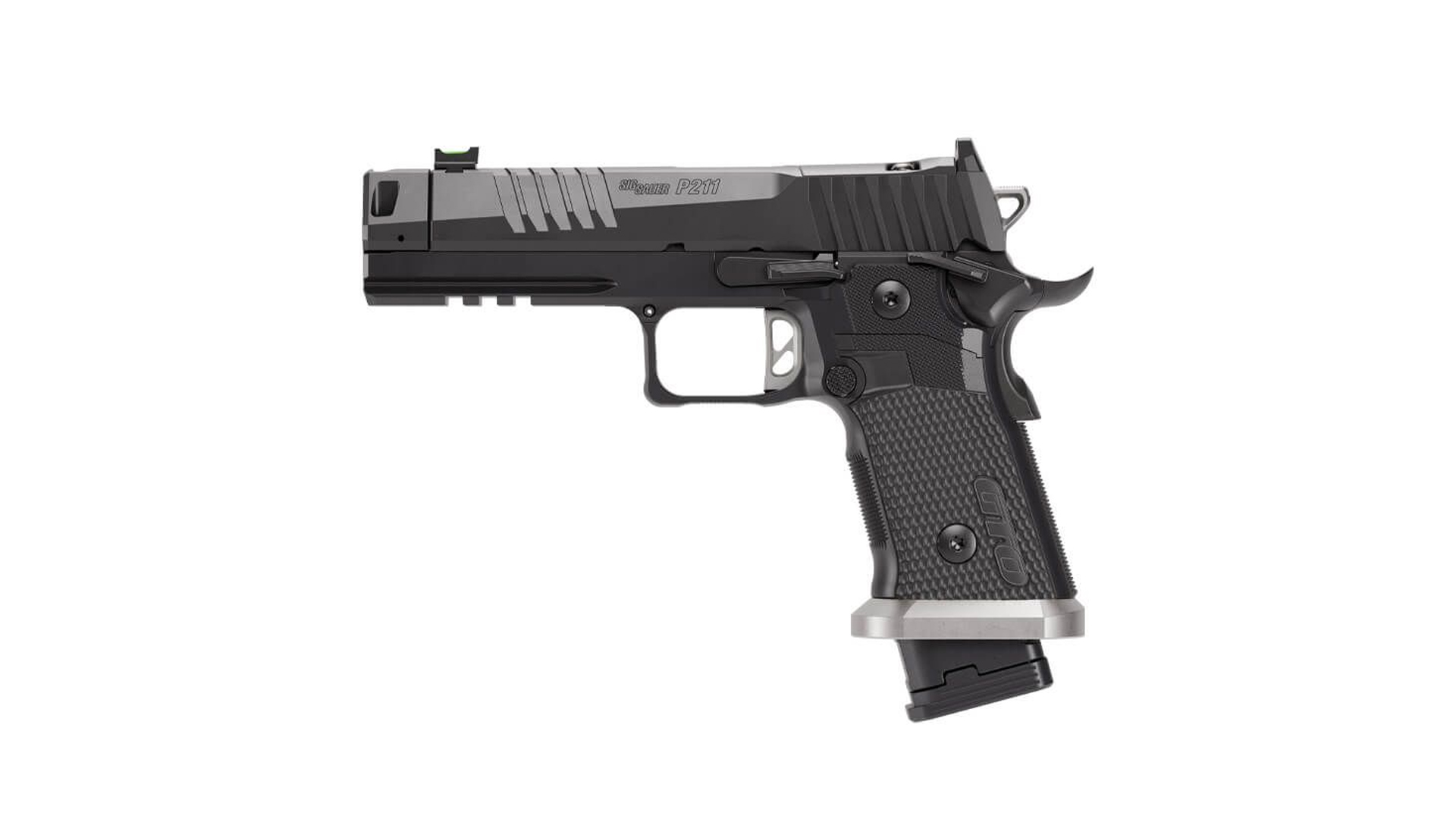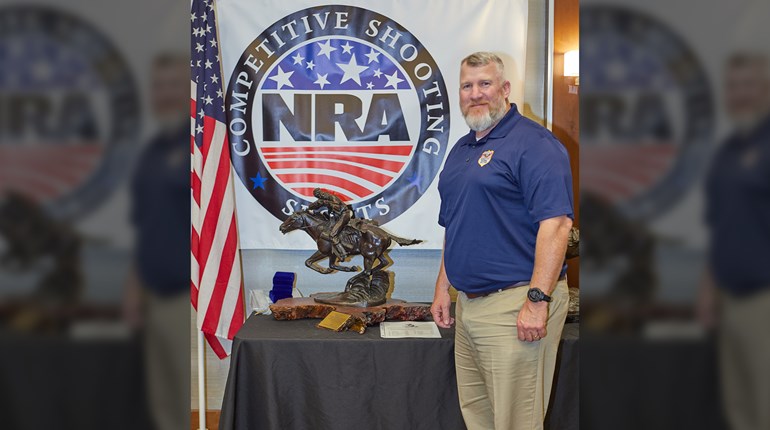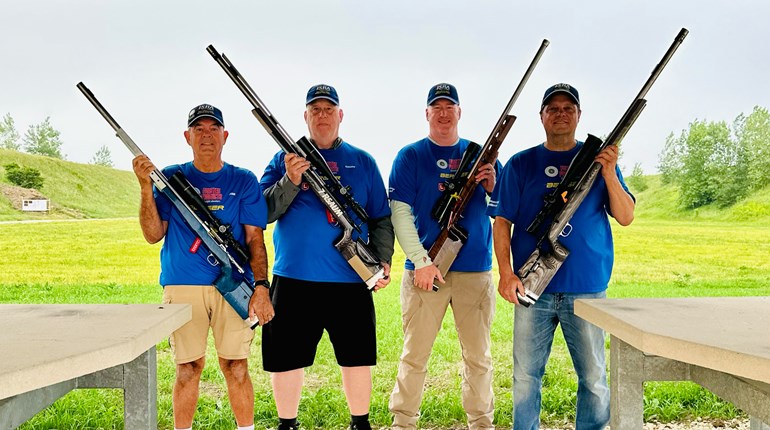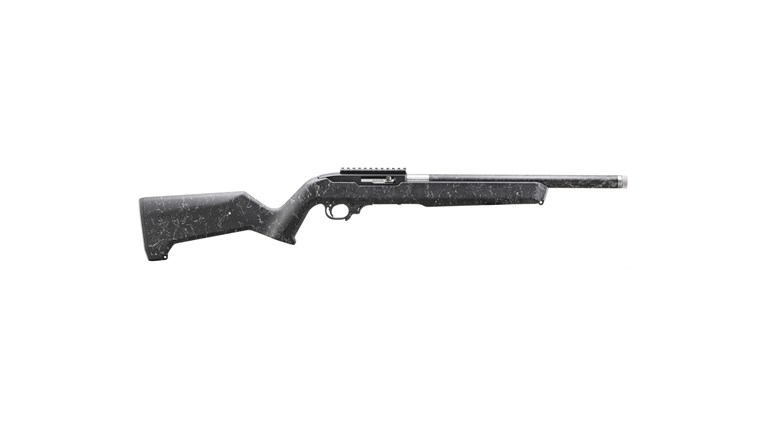
Since the 19th century, cadets in various military schools have been involved in marksmanship. At the brink of World War I, many of these marksmanship programs evolved through the ROTC programs. During the 1920s, collegiate shooting became well-regulated and established. In 1923, cadets from the Virginia Military Institute were sent to compete at the NRA National Matches at Camp Perry, Ohio, and all returned with prizes. In 1924, the first shoulder-to-shoulder intercollegiate smallbore competition took place with a team from the Massachusetts Institute of Technology as the winner. Even when schools could not compete shoulder-to-shoulder, many teams would fire on their home range and mail their scores to another team for comparison. Thereafter, many developments would be made in the collegiate program of the NRA.
The NRA established the Collegiate All-American program in 1936 to honor top collegiate rifle shooters. Since then, all types of shooting disciplines have been added to the NRA All-American program. NRA All-Americans have gone on to lead very successful careers. Robert Sandager, a 1936 NRA All-American from the University of Minnesota, went on to be named to the U.S. Shooting Team for the 36th World Championships. NRA All-Americans have also won medals for the U.S. in Olympic competition. In 2000, University of Kentucky graduate and three-time NRA All-American Nancy Johnson won the first gold medal for the Olympics in Sydney, Australia, and for the new millennium by shooting air rifle. More recently, 12-time NRA All-American and West Virginia University rifle team freshman Ginny Thrasher (pictured at the top of this article) won the first gold medal of the Rio 2016 Olympic Games in the women's 10-meter air rifle event.

In 1939, the College Sectional was created. Sectional tournaments are NRA-registered indoor matches conducted at numerous locations throughout the country. After firing, scores are sent to NRA where they are nationally ranked an any national records are recorded.
In 1942, the impact of World War II on the nation stopped the annual sectional tournaments. The sectionals resumed in 1946 with approximately 100 college rifle and pistol clubs participating. For years, the college season was highlighted by the NRA National Intercollegiate Rifle and Pistol Championships fired on a shoulder-to-shoulder Sectional Tournament basis each spring.
The collegiate shooting program introduced the International style of shooting in 1964 in order to give promising collegians a chance to make international teams. The collegiate shooting program adopted the air rifle course-of-fire in 1977 to keep pace with international shooting events. During the 1970s, the United States Air Force deeded Ent Air Force Base, Colorado Springs, Colo., to the United States Olympic Committee to be used as a training center for Olympic sports. Subsequently, the NRA established a shooting program for the United States Shooting Team at this center.
The 1980s brought about a major advancement in recognizing shooting when the NCAA adopted collegiate rifle shooting as a sport. In 1984, sophomore Pat Spurgin of Murray State University went to the Olympics in Los Angeles and brought fame to herself by winning the gold medal in women's air rifle. Today, the rifle range at Murray State University is named in her honor. Just after the 1984 Olympics, a new system was established to select our best shooters to represent the United States. The system was the U.S. Development Team and the National Team. The NRA helped to build the Shooting Sports Complex at the Olympic Training Center and dedicated it in 1985.
Three-time NRA All-American Launi Meili of Eastern Washington University set the pace for Olympics in Barcelona, Spain, by winning the 1992 Olympic gold medal in women's 50-meter three-position smallbore rifle. The NRA ceased to be the National Governing Body (NGB) for U.S. Olympic Sports in 1994. USA Shooting, the new organization, is now the NGB and conducts events of the U.S. Shooting Team. The sport has continued to thrive as more schools realize the potential of hosting a shooting program.

Collegiate shooters continue to excel as they represent the U.S. in Olympic competition. In 1996, shotgunner Kim Rhode of California State Polytechnic University at Pomona won the Olympic gold medal for double trap. Rhode would go on to earn six medals in total at subsequent Games up to 2016 Rio, as well as winning election to the NRA Board of Directors in 2018.
In the Sydney 2000 Olympics, Kim Rhode and three-time NRA All-American Nancy Johnson won medals, Rhode taking home a bronze medal for double trap, and Johnson a gold medal for air rifle. Looking forward to the Tokyo Olympics next year, two University of Kentucky NRA All-Americans, Mary Tucker and Will Shaner, earned their spots on the U.S. Olympic team in March 2020. Triumphs will continue to appear as collegians break records and extend the history of collegiate shooting.
The National Rifle Association
Affiliating with the National Rifle Association brings a wealth of benefits to a college shooting sports program. The various divisions with the NRA assist in areas such as instructor and coach training, course development, establishment of league and tournament competition and range evaluation and development. The NRA also locates various resources such as ranges, gun clubs, state associations and training support in surrounding communities. NRA affiliation makes participants eligible for NRA qualifications and classification status and provides access to the world of shooting beyond the campus.
The National Rifle Association is first and foremost an organization designed to provide valuable services to its members, to affiliated organizations like collegiate shooting clubs and to any person or group interested in the promotion of the safe and responsible use of firearms.
The National Rifle Association, incorporated in 1871, is an educational, recreational and public service organization that is dedicated to the right of the individual citizen to own and use firearms for recreation and defense. A non-profit service organization supported by its membership and affiliated clubs and associations, the NRA receives no appropriations from Congress.
The National Rifle Association:
- Fosters and promotes the shooting sports on all levels.
- Promotes hunter safety, hunting and proper wildlife management.
- Trains citizens in marksmanship and firearm handling.
- Provides training for law enforcement agencies in marksmanship and firearm handling.
- Promotes public safety, law and order and a collective interest in national defense.
- Protects and defends the Constitution of the United States, especially the right of the individual to keep and bear arms.
Read more: Everything You Need to Know About Collegiate Shooting Sports



